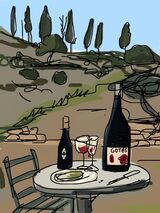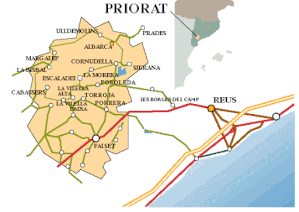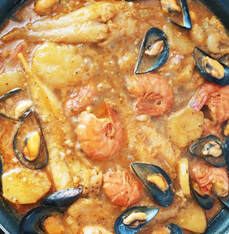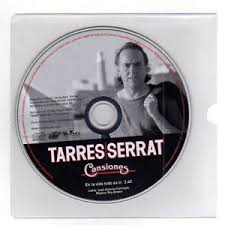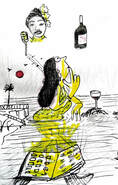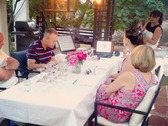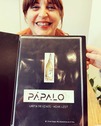|
As its name suggests, Vi de la vila de Torroja is a red wine made with grapes harvested around the town of Torroja (Tarragona). In this case, unlike what happens with the most exceptional cuvées from Terroir al Límit, village wine is made with two different varieties: Garnacha and Cariñena, and interprets two different soils: slate and clay. DO. PRIORAT. TERROIR AL LIMIT SOC. LDA. 93 Parker points. The Terroir al Límit winery has its own old vineyards, cultivated on slopes, with vines from 50 to 100 years old, working with autochthonous varieties and with biodynamic practices. The philosophy of the winery is based on the production of wines with character that subtly show us in an elegant and fresh way, the unique terroir of Priorat. A history of old and extreme vines, located in small plots and caressed by the Mediterranean climate and others not so old, grown on trellises. After a traditional elaboration, Torroja Vi la de la Vila undergoes an aging of 12 months in French oak foudres of second wine (Foudres are large capacity vats that, thanks to their size, reduce the contact of the wine with the wood, allowing the aging to continue without adding too many tannins and toasted aromas to the wine) This bottle of wine has a wait of several months to be uncorked and shared, an unexpected and precious gift that arousing a lot of curiosity and looking for the right moment, did not disappoint. It was seducing us little by little, very gracefully.  Subtle and slender red, suggestive ripe plum color and long tears. Very colored and clean cork and her dress with low layer. In the NOSE with aromas of liquorice, herbs, almonds and that pink pepper that multiplies with the heat of the cheeks. In PALATE it is fresh and juicy at the same time, round and expressive. Its texture is silky, reminiscent and inspiring of Bourgogne wines thanks to its very delicate tannins ... Achieved acidity that allows it to be vigorous without overwhelming. The wood is present, but it does not stand out at all and its warmth shows serenity. The finale is long and personal, as a young fighter and innovative spirit. It is recommended to open one hour in advance before serving or use an aerator. Excellent save. It is the ideal wine to begin in the philosophy of Terroir ... Although we do not perceive the expected mineral / slate touch ... We could feel its excellence. It pairs well with a Mediterranean diet, famous for its dishes with a pure and authentic flavor, harmonious without hiding the authentic character of the land and the sea, so we tried an ibérico ham (acorn-fed), Payoyo goat cheese, blue cream cheese and they accompanied well. We continue to taste with an orange duck pate and we miss that it did not have that “hunting touch”… But the star dish was a rockfish “peix suquet” which thanks to its sauce intensified the notes of almond and pink pepper. And musically speaking, we also opted for something genuine and Catalan such as Serrat and his palindrome Tarres. El Priorat is the second qualified denomination of origin in Spain after Rioja and is probably one of the areas where the immensity is best palpable... El Priorat (Tarragona) is a mystical land, of great wines, which were born in the light of meditation and prayer fostered by a monastic foundation that gave the region its name and is responsible that the word Priorat means wine and excellence. Terroir al Límit is a winery initially formed by two friends: Eben Sadie, from South Africa, where he also produces wine, and Dominik Huber, from Germany. Later he participates and joins the Jaume Sabaté project. A project as inspired as it is risky, totally focused on the vineyard, recovering traditional production practices and reducing the role of wood to a minimum The winery works with the intention to rescue the spirit of the wines as they were made before the so-called Priorat revolution. They seek the minimum intervention and try to ensure that the consumer gets the maximum expression of the Garnacha and Cariñena in each bottle that is uncorked. French philosophy applied to the terroir and distinguishing between village wine (slightly anticipating the official zoning of the region and the creation of the ‘vi de vila’ category), ‘coster wine’ and high altitude wine that would be the equivalent of ‘grand cru’; clear preference for Cariñena and Garnacha better that does not come from slate soils; excessive ripening is not sought and it is harvested rather early; Fermentation is carried out with stalks (lately it is removed before it is completely finished) in open plastic vats and the wood is limited to the minimum expression, favouring large containers and especially foudres. "We don't want to make up anything," says Dominik A. Huber of his wines. "If you believe in your territory and your land, you don't need a barrel." Of course, it can be considered an almost sacrilegious statement in the country that devotes the most to wood. But we are in Priorat, probably the region that concentrates the largest number of wine visionaries and romantics, and the small project by the German Huber is a complete departure from what had been done so far in the area. As Huber affirms, “it can be a unique experience to drink a special wine that really thrills you and that has the ability to transport you to a certain terroir”. And there is no doubt that Priorat is full of impressive and exciting landscapes: a labyrinth of mountains, endless curves and old vines planted on steep slopes on slate soils (the so-called 'llicorella') 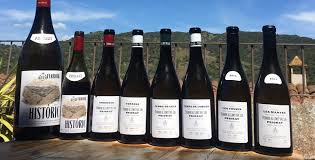 Mystical legends The legend details that the order sent some monks to find the most suitable place for their needs. During this time they met a shepherd who explained to them that in his dreams he saw angels ascending to heaven by stairs supported by the stump of a pine tree that was in the place where he led his flocks to graze. This geography, as beautiful as it is full of hardness, already powerfully attracted the Carthusian monks who, in the 12th century, saw a stairway to heaven in the rocky Montsant mountain range, settled at its feet and notably promoted the cultivation of the vineyard.The monks interpreted it as a sign from God and there they built a small cloister that would be the origin of the Charterhouse of Santa Maria de Scala Dei, which means "stairway to God." It was an expansion center for other religious foundations and had three cloisters and up to 30 cells. The Carthusian monastery was a fundamental promoter of vine cultivation in the region that currently makes up the «Denomination of Origin Qualified Priory». Scala Dei was a monastery founded in the 12th century, considered to be the first Carthusian monastery and the first monastery of the order of San Bruno in the Iberian Peninsula. It dates back to the year 1194, in which King Alfonso II the Chaste donated the lands to the Order of the Carthusians to build a monastery.
0 Comentarios
Deja una respuesta. |
irene sayasEntusiasta y conocedora de la magia del vino. El vino evoca, convoca y provoca... *Archivos:
|
Cómo contactarnos / How to contact usTeléfono 690 073 871 |
Suscribirse / SubscribeÚnete a nuestra lista de correo hoy!
Sign up to our mailing list now! |

